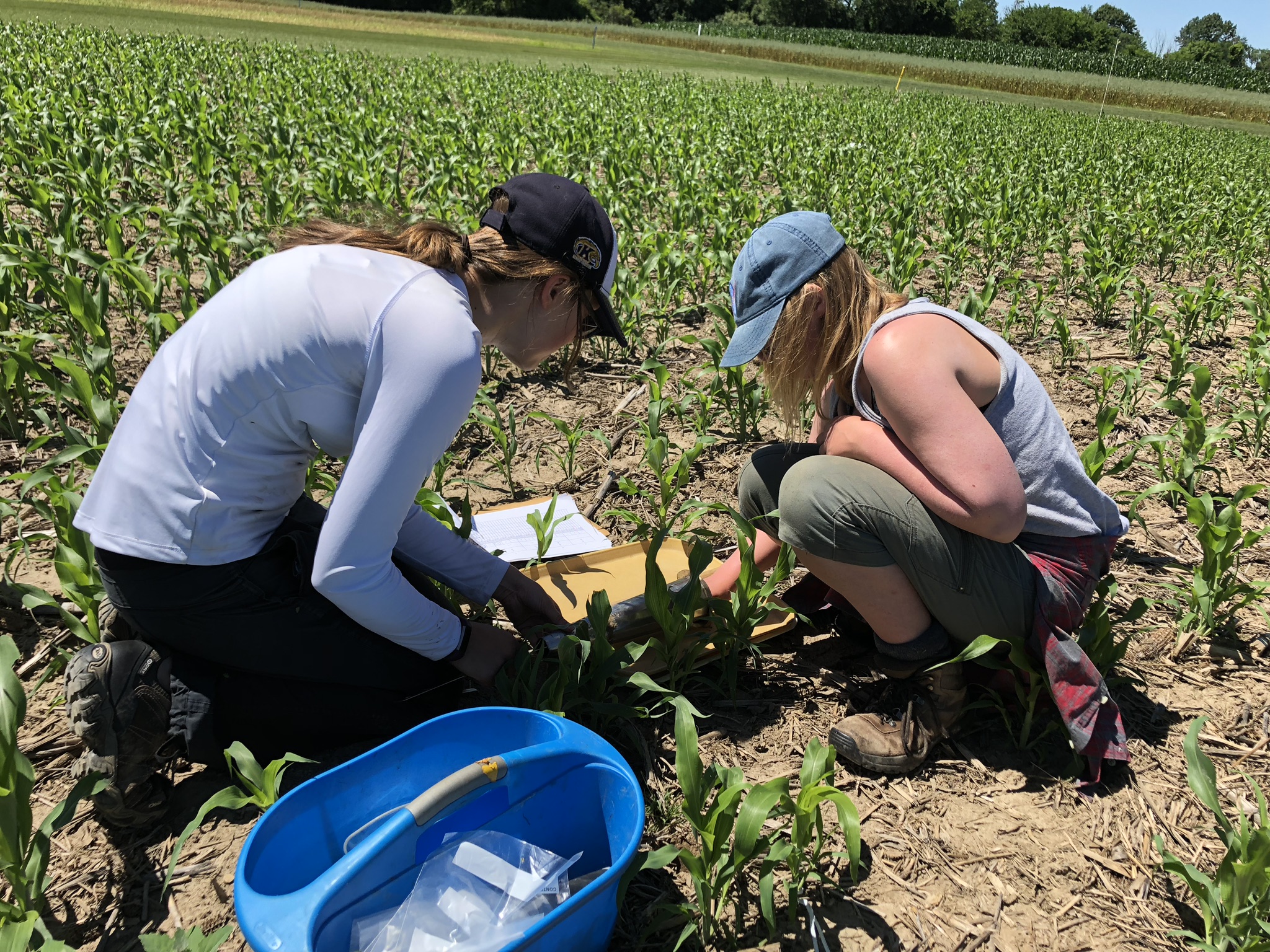Biodiversity and Ecosystem Services in Cellulosic Biofuel Landscapes
As part of the Great Lake s Bioenergy Research Center, the Landis lab is working to understand how future production of bioenergy crops will affect biodiversity and ecosystem services. Our past work has shown that perennial grassland base biofuel crops could promote natural pest control at local and landscape scales. Specifically, predation of pests is greater in grassland compared to annual bioenergy crops, and increases in landscapes with extensive perennial grassland habitat. Furthermore, carbon cycling in soils is a highly dynamic process controlled by both abiotic and biotic factors above- and belowground. While abiotic and microbial factors have received much attention, the influence of soil arthropods on carbon cycling are less clear. Current work is focusing on:
s Bioenergy Research Center, the Landis lab is working to understand how future production of bioenergy crops will affect biodiversity and ecosystem services. Our past work has shown that perennial grassland base biofuel crops could promote natural pest control at local and landscape scales. Specifically, predation of pests is greater in grassland compared to annual bioenergy crops, and increases in landscapes with extensive perennial grassland habitat. Furthermore, carbon cycling in soils is a highly dynamic process controlled by both abiotic and biotic factors above- and belowground. While abiotic and microbial factors have received much attention, the influence of soil arthropods on carbon cycling are less clear. Current work is focusing on:
- How does landscape configuration (spatial arrangement) affect natural pest control?
Our past work suggests increasing the proportion of perennial grasslands on a landscape can promote natural pest control, but future bioenergy landscapes may also have distinct spatial arrangements, especially if the less-productive portions of annual crop fields are converted to perennial biofuel crops in the future.
- How do soil arthropods influence soil carbon pools?
We are working to understand the ways in which below-ground arthropod activity and diversity impact microbial communities in order to gain insight into how these multi-trophic interactions affect carbon sequestration. Current work is focused on comparing soil arthropod communities existing in different bioenergy cropping systems ranging from annual, low plant diversity systems to perennial systems with high diversity.
Related Publications:
Perennial grass bioenergy cropping systems: Impacts on soil fauna and implications for soil carbon accrual - Allison Zahorec, Matthew L. Reid, Lisa K. Tiemann, Douglas A. Landis; October 2021
Designing agricultural landscapes for arthropod-based ecosystem services in North America - In book: The Future of Agricultural Landscapes, Part II: Nathan L.Haan, Benjamin G.Iuliano, ClaudioGratton, Douglas A.Landis; January 2021
Landscape composition and configuration have scale-dependent effects on agricultural pest suppression - Yajun Zhang, Nathan L Haan, Doug Landis; October 2020



 Print
Print Email
Email